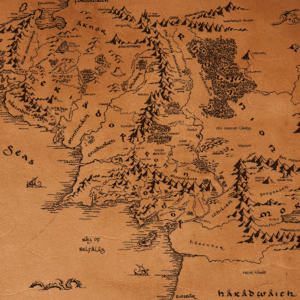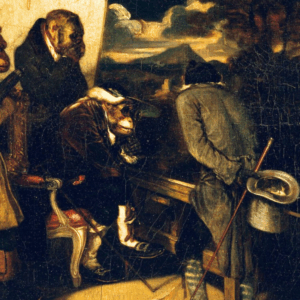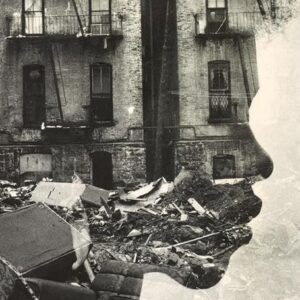
How to Write a Good Sex Scene
25 Writers on the Hardest (Sorry) Literary Technique
Writing sex scenes is notoriously hard. Ha, ha, I know. Will your readers cringe? Will your mom faint? Will you think of yet another synonym, or have you at last managed to access them all? And yet, when sex writing is good, it’s very very good—and, I daresay, important. So this Valentine’s Day, I dug through the archives to find some good advice from writers who do it with style.
♥
Yael van der Wouden:
A few interesting observations: good sex in the bedroom does not automatically make for good sex on paper; there’s no position that’s sexy enough to work without us knowing why the characters want to fuck; and even when you’ve figured out the why, having only an external motivation (“he’s HOT”) or only an external hurdle (“our PARENTS won’t LET US”) is not enough.
The text needs to work to get us to the same level as the characters themselves, to feel their desire as our own. A good sex scene has you teetering between experience and voyeurship: you’re seeing what’s happening, and you’re feeling it yourself.
This is why sex translated from real life tends to fall flat on the page: writers stick to the order of events, movements, and forget the reader isn’t entering the text with the lust they felt in the moment. It all comes down to creating tension through stakes. A reverse cowgirl, unfortunately, is not stakes enough.
–from “You’ll Need More Than That Reverse Cowgirl: The Craft of Writing (Actually) Good Sex Scenes“
♥
Garth Greenwell:
It is so easy to seek refuge in metaphor or abstraction when writing sex, and to lose sight of the physical bodies interacting with each other. I constantly remind myself, when writing sex scenes, to attend to bodies in space, to how actual flesh fits together. In all my workshops I emphasize that, whatever you’re writing about, logistics are sexy—working out the details of physical reality is a way of expressing your commitment to the world you’re writing. I think of Zola’s description of lowering a horse into a mine, or Iris Murdoch’s account of dragging a medieval church bell from a lake: those are moments of immense vividness and life, precisely because they are so invested in mundane, technical descriptions of how things work. The same thing is true of sex. This doesn’t mean rejecting the metaphorical and abstract—what we need is a complicated, difficult counterpoint that allows sex to be illuminative of both external and interior reality, of concrete particulars and the large questions sex inevitably raises.
–from an interview with Cassie Archdeacon
♥
Raven Leilani:
How I approach sex is how I approach character in general. In these scenes where people are ostensibly laid bare, I want to make room for the parts that are ugly or contradictory. In that space, especially because this book is dominated by Edie’s many performances, there is no curation. Sex is a place where people are always subject to managing the expectations of their partner or being careful in what they reveal. It’s also an avenue to explore character and power. The books I love that talk about sex are relentless in their representation of what it looks like when people have sex. The way that intimacy manifests is an awkward, silly, ugly thing. A pristine representation of what sex looks like doesn’t feel true or interesting. I tried my best to create an honest depiction—what it looks like when sex is good, but also when it’s bad. I want room for pleasure and tenderness, but also the parts that are strange.
–from an interview with Esquire
♥
Edmund White:
Don’t try to make sex scenes pornographic, since that will make them formulaic in actions and language, and unbelievable. Include all the incongruent, inconsequent thoughts and amateurish moves. Most sex is funny, if we accept Henri Bergson’s definition of humor: the failure of the body to perform up to the spirit’s standards, or the resistance of the material world to the will’s impulses.
Remember that sex is our most intense form of communication in a language no one can decipher or interpret. What does it all mean? Did a bit of rough lovemaking intend to convey hostility, or passion? Is the tenderness rehearsed, or sincere?
–from an interview with The New York Times
♥
Melissa Febos:
When it comes to sex scenes, the rules say things like: Don’t write them at all, and if you do, don’t use these words. Don’t write them silly, porny, dramatic, tragic, pathological, grim, or ridiculous.
My whole practical thesis around the craft of writing a sex scene is this: it is exactly the same as any other scene. Our isolation of sex from other kinds of scenes is not indicative of sex’s difference, but the difference in our relationship to sex. It is our reluctance to name things, the shame we’ve been taught, our fraught compulsion to enact a theater of types. It is indicative of the lack of imagination that centuries of patriarchy and white supremacy has wrought on us.
–from Body Work: The Radical Power of Personal Narrative and excerpted in Lit Hub’s Craft of Writing newsletter
♥
Sally Rooney:
When I hear the phrase “sex scene,” I think about a dialogue scene. What do these characters want to say to each other? I won’t just write a scene where two characters say words to each other randomly. Similarly, sex scenes have to actually play some dramatic role. If I locate something that’s being exchanged between them in an emotional sense, or that’s changing the dynamic between them, I’ll have to follow them through the scene. I want to be there because otherwise we don’t get a sense that anything’s changed.
–from an interview with Oprah Daily
♥
Isle McElroy:
Late last year, when Adam Levine’s alleged sexts went viral, his attempts at flirting were heavily ridiculed. His desire seemed pleading and generic. “That body of yours is absurd,” Levine allegedly wrote. “How are you such an hourglass.”
These messages served as an unintentional seminar on what good sex writing should never be, not because his desire is silly—desire is always silly, and self-serious, and enormous, and and and and and and—but because, taken out of its context, sex writing will undoubtedly flop. Good sex writing, however, the kind found in books by Anaïs Nin and Raven Leilani and Garth Greenwell and Violette Leduc and others captures the strange and animate details of bodies and souls in connection. It reaches outside of time, the past and the future swirling eagerly around the immediate moment.
–from “Isle McElroy on the Art of the Sex Scene” as it appeared in Lit Hub’s Craft of Writing newsletter
♥
Rachel Kushner:
I don’t think of sex as any more difficult to write about than any other human behavior. Writers fail or soar at anything. Everyone thinks about sex, engages in it. It’s the secret we all share. Just acknowledging its constant presence in people’s thoughts is a good direction for a novelist. Of the books I like, it could be argued that sex is infused into every cadence, even if never explicitly. And “not explicit” doesn’t mean that the prudish kiss leads to the prissy dissolve, but that characters are motored by desire. The authors I admire most seem to render an erotic force field on every page.
–from an interview with The New York Times
♥
Hermione Hoby:
At its most cursory level, the story is an account of predation and dubious consent, played out largely over text. As such, it was hailed as some kind of dispatch from the zeitgeist. The underlying notion, that literature is in service to the zeitgeist, or even that a story’s value resides in how loudly and righteously it speaks to the prevailing political wind, is a troubling fallacy. The power of that story, as with its forebears—by which I mean precise depictions of imprecise heterosexual relations—was in its fine-tuned ambivalence. This sort of ambivalence is the opposite of a cop-out: it’s generative, rather than reductive, and it comes from time, on the writer’s part, spent dwelling in uncertainty.
–from “The Literature of Bad Sex“
♥
Heather Levy:
My biggest piece of advice for writing about sex is to go for it without fear of getting it wrong. When a sex scene is highly orchestrated on the page, it can read as inauthentic and robotic. Sex isn’t perfect, and that can be reflected in scenes while still maintaining the steam factor. I love seeing slight stumbles when two characters are having sex because it creates a sense of intimacy. I want to be in that space with the characters, in their heads as they’re experiencing each other and all the emotions—lust, trepidation, embarrassment, etc.—they may feel.
–from an interview with CrimeReads
♥
K Patrick:
I had to find a form that would hold on to it properly. I’m interested in the way words can release and hold on to the body. The more I think about it now, the more I find that language is a place where sex can be transcendent. I found I was adding, not reducing. I could slow down, add detail, collapse the self a bit. . . . For me, the writing of good sex scenes is all about rhythm. To get mine right, I spent a lot of time copying out other really good sex scenes. Especially stuff by Robert Glück. He writes the best sex ever in Margery Kempe [1994].”
–from an interview with Helen Brown
♥
Reine Arcache Melvin:
I found inspiration in Italo Calvino’s essay “Lightness” in Six Memos for the Next Millennium. He describes the problems he faced as a young writer, when he aimed to write about the “ruthless energies” of the world. He wanted a light touch in his writing, yet dealing with heavy topics made his writing heavy as well: “The weight, the inertia, the opacity of the world [are] qualities that stick to writing from the start, unless one finds some way of evading them.” How to maintain lightness—how subtract weight—while writing about such topics?
Calvino offers a technique that can be applied to sex scenes (though he wasn’t talking about sex): approach the scene by turning away, as Perseus did when he killed Medusa. Perseus knew that if he looked directly at Medusa, he would turn to stone. To slay her, he had to turn away from her and take aim by looking at her reflection on his bronze shield. A similar strategy works well in sex scenes. We can look sideways, to what happens immediately before and after the sexual act, to what is going on in the characters’ minds or in the world beyond their bed when they make love, to the other dramas in their lives—everything but a direct look. We can leave spaces. The reader will fill in the gaps.
–from “When Less Is More: On Writing Sex and Violence“
♥
Curtis Sittenfeld:
Writing about characters having sex isn’t very different from writing about characters doing anything else, but it would be disingenuous to act like I don’t know that it can be received differently by readers. The kind of fiction I like to read and write is very specific and detailed about everything—settings, moods, smells, textures—so to me it’s kind of silly or coy not to apply that specificity and detail to sex, and I don’t see the point of coy fiction. Therefore, I write the scenes that I think serve a particular story or novel, and in the moment of writing, I sort of exist in a parallel universe and don’t consider what, say, my uncle or my former co-worker might think of my description of a blow job. Right before my work is published, I do think about it and the truth is that I feel queasy and think, What have I done? Because I’m not usually someone who defies social norms. Then again, I suspect from feedback over the years that at least 75% of readers find a story more entertaining (or more something) with sex. It’s just that when I’m interacting with my readers (including a nun in a recent book club), I don’t know who’s in what percent.
–from an interview with The New Yorker
♥
Chimamanda Ngozi Adichie:
What works, I think, is to approach the scene with the awareness of sex as beautifully human, and with a lack of interest in airbrushing this beauty. Clumsiness and fluids interest me. Vague waves of passion do not. And plain language never fails. I am wary of excessive or obscuring metaphor, partly because it suggests a kind of shame, and partly because I am unable to enter the world of the scene imaginatively. I much prefer breasts to heaving mounds. Most of all, a good sex scene should allow some sentiment and let in a bit of magic. There’s much in the world today that is irony-drenched and cynical; I like sex scenes that choose instead to be honest and open.
–from an interview with The New York Times
♥
Elissa Sussman:
Yes, I love a good plot and great character development and fun banter, and I am most definitely expecting a happily ever after, but my number one concern has always been: how’s the sex?
Is it good? Is it descriptive? Is it ON THE PAGE?
I’m not saying there’s anything fundamentally wrong with a closed-door romance. Authors should write what they feel comfortable with, and readers should pick up whatever floats their boat. What floats my boat? A good, lengthy… sex scene.
–from “Why Sex Scenes Are Not Only Feminist, But Necessary“
♥
Carmen Maria Machado:
I’m really interested in writing about sex. I feel like it’s not often done well, and it’s sometimes done outrageously. I also get annoyed when writers are afraid to show pleasure. I’m tired of reading really dreadful sex scenes where everyone’s miserable and then eventually maybe one person has a reluctant orgasm. I thought, What if I tried to have a scene where people had sex and it was great? My characters do have sex in varying emotional states, and with various results. I took a class at Iowa with Allan Gurganus, and he picked my story to talk about in class—it was a very different version of “Real Women Have Bodies”—and he really liked that there was sex in it. He said, You should always give your characters a roll in the hay—they work hard, they deserve it. Which I thought was so funny. I tell my students that party scenes are really important in fiction because a party scene can go in any direction. Sex scenes can be similar. You’re putting characters together—what happens as a result?
I also like treating sex as a thing that happens. I wanted the sex to be mostly uncommented upon, just a part of the story, a part of the characters’ lives, as sex is in real life. I have characters in this book who have sex with both men and women, and I wanted the queerness and the liquidity of the sex to be uncommented upon also. It’s not a big deal—it just is what it is. Sometimes people describe “The Husband Stitch” as erotica, and I like erotica, but that’s not erotica. The story is not serving the sex, the sex is serving the story.
–from an interview with The Paris Review
♥
Bee Sacks:
Sex is an act of communication. Nothing more, nothing less. Sex has the potential for profound intimacy, yes, and betrayal, sure, but it has no intrinsic value—good or bad. When I am mentally preparing to write a sex scene, I remind myself that despite the cultural connotations built around sex, there is nothing inherently scandalous about the act, no matter the reception that sex eventually gets with readers. It is an act of communication between partners; perhaps most acutely, it is an act of communication with ourselves.
–from “Some Fundamental Principles for Writing Great Sex“
♥
Jane Smiley:
Sex scenes are not about getting aroused. They are about showing how a particular character goes about having sex, what it means, and what happens next.
They might be arousing, but what I really want the reader to do is keep reading, so the scenes have to be narratively interesting and meaningful, as idiosyncratic as any other scene. That means that you have to think about and investigate sex and relationships as frankly and intently as you would anything else that you are writing about (say, changes in the banking rules).
The more you treat it as just another thing, just another interesting thing, the better your sex scenes will be.
–from an interview with Kristen Tsetsi
♥
RO Kwon:
Since the house of fiction is large, holding infinite rooms, I suppose there must be at least as many varieties of well-imagined sex scenes. But when I’m writing one, I ask my characters what they want, what else they want, and what else on top of that. I want so much, all the time, and my characters usually do, too.
–from an interview with The New York Times
♥
Sarah MacLean:
Writing about sex is a challenge for the same reason sex is a challenge. Because it’s complicated. Because it doesn’t always make sense and it isn’t always perfect and it’s sometimes awful and it’s sometimes hilarious. But underneath all the clever wordplay, it’s about hope. Hope that someone will see us, and accept us, and perhaps—after all that—choose us. It’s the barest we will ever be. The barest a character will ever be. That’s why it’s difficult.
As for what makes a good sex scene, a romance novelist would have told you that when done well and with a skilled hand, the best sex scenes can at once arouse and empower. Sex on the page gives readers the freedom to explore their own sexuality, their own pleasures, their own identities. With hope. And without judgment.
–from a letter to the editor published in The New York Times
♥
Julia Fierro:
As in most things literary, the solution to writing “good” sex, and protecting yourself (fingers crossed) from The Literary Review’s [Bad Sex] “award,” is to think of the reader. Just as there is an infinite variety of “good sex”—the factors dependent on those partaking —there are also an infinite variety of writers, each with his or her ideal reader. Me, I want my literary sex real—fluids and all.
–from “A Sentimental Education: Sex and the Literary Writer“
♥
Diana Gabaldon:
First, a good sex scene is about the exchange of emotions, not body fluids. In other words, what’s going on physically is not really important. It’s what’s going on emotionally that’s important. You use the physical attributes or setting, only as a means of anchoring the reader in the moment, but it’s about what’s going on between these two people.
And that leads to the second principle, which is that a good sex scene can only happen between two unique and specific people. If you took one of say, Jamie and Claire’s sex scenes, and substituted the names Ana and Christian for theirs, it would not work. They are very specific, to each kind. And so, if you have a scene that could only be done by these two people, then it’s probably a good scene.
–from an interview with Town & Country
♥
Eliza Nellums:
Like any other plot point in my books, I try to have at least one secret I’ve been holding back just for that scene, which reveals itself during the action. It could be something subtle, like a macho character being actually kind of a sap—or something stark, like our heroine checks out during the main event. Are they thinking of past experiences? Is there someone else they wish they were with? Maybe our couple’s initial attempt doesn’t work out, with someone killing the mood—do they work through it, or give up? These are all ways to learn about the characters and their circumstances.
–from “Writing Sex Scenes in the Realm of Mystery“
♥
Ruth Madievsky:
I’ve always been interested in the interplay between tenderness/desire and violence. It’s so silly to see internet discourse about whether explicit sex scenes are “necessary.” I don’t know, Regina, are nectarines and cough drops and your brother “necessary”? I don’t think sex scenes have to “earn” their place in a book more than any other scene. But I also don’t buy that they don’t function differently on a craft level than other scenes. People pay more attention to them, I think, which means they function differently than a scene where someone is teaching a math class. I mean, one could write the math class scene in a way that’s just as erotic as a sex scene, but I digress. I think it’s easier for a sex scene to fail because we’re primed by our puritanical and sex-obsessed culture to take notice when we see sex on the page. I’m a poet, so I was already going to polish every sentence in the book like a fucking stone. With the sex scenes, I probably took a little extra care, knowing those might be more memorable.
–from an interview with Autostraddle
♥
Jasmine Guillory:
People always ask about writing sex scenes, but it seems to me to be something that grows out of the relationship. I think, who are these two people? What are they like? What’s the reason they’re having sex today? Each sex scene is different. It’s not something you can cut and paste.
–from an interview with Slate
Emily Temple
Emily Temple is the managing editor at Lit Hub. Her first novel, The Lightness, was published by William Morrow/HarperCollins in June 2020. You can buy it here.












